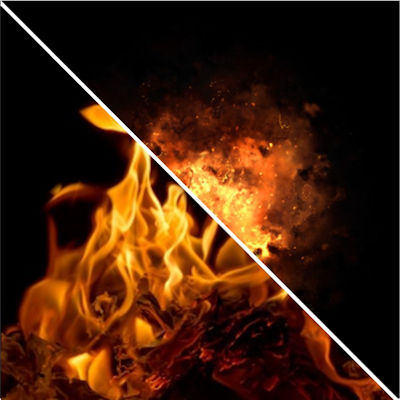Two Primary Hazards
The primary hazards associated with flammable and combustible liquids are fire and explosion. Flammable and combustible liquids are present in almost every workplace. Fuels and many common products like solvents, thinners, cleaners, adhesives, paints, waxes, and polishes may be flammable or combustible liquids. Everyone who works with these liquids must be aware of their hazards and how to work safely with them.

- Flammable liquids will catch on fire and burn easily under normal working temperatures. At normal room temperatures, flammable liquids can give off enough vapors to form burnable mixtures with the air. As a result, they can be a serious fire hazard. Flammable liquid fires burn very fast. They also give off a lot of heat and often clouds of thick, black, toxic smoke.
- Combustible liquids have the ability to burn at temperatures that are usually above working temperatures. Combustible liquids at temperatures above their flashpoint also release enough vapor to form burnable mixtures with the air. Hot combustible liquids can be as serious a fire hazard as flammable liquids.
Spray mists of flammable and combustible liquids in the air may burn at any temperature if an ignition source is present. The vapors of flammable and combustible liquids are usually invisible. They can also be hard to detect unless special instruments are used.
Most flammable and combustible liquids flow easily. A small spill can cover a large area of workbench or floor. Burning liquids can flow under doors, down stairs, and even into nearby buildings. Materials like wood, cardboard, and cloth can easily absorb flammable and combustible liquids. Even after a spill has been cleaned up, a dangerous amount of liquid could still remain in surrounding materials or clothing, giving off hazardous vapors.
Knowledge Check Choose the best answer for the question.
2-2. Why can burning flammable and combustible liquids pose a hazard even after a spill has been cleaned up?
You forgot to answer the question!
